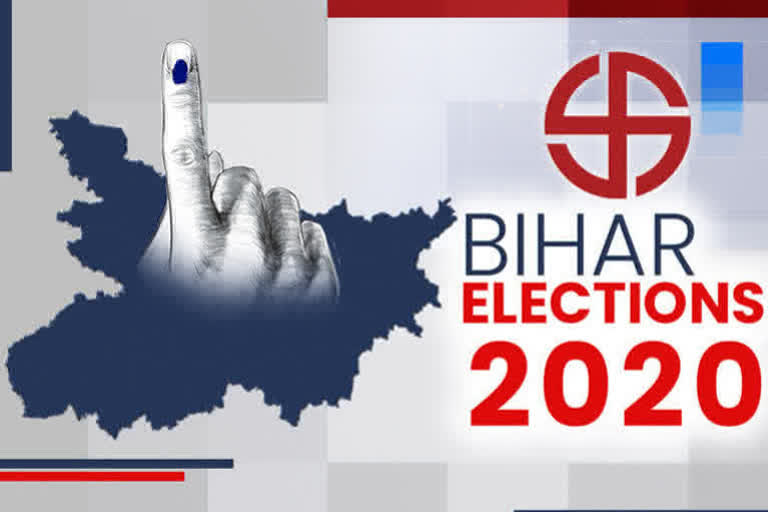Hyderabad:In a highly polarized environment, the NDA in Bihar seems to have strategized its electoral chessboard in such a meticulous way that any move the Yadavs or Muslims make will benefit the BJP most. The caste landscape and its organogram is multidimensional, making it difficult to drift the entire vote share of Muslims and Yadavs against the NDA.
Nitish Kumar’s decades of lineage and welfare, apparently, for Muslims and OBCs have not vanished altogether, it may rather have thinned for some of the decisions the BJP-led government made in the parliament, particularly, Muslims assume, are against their best interests, like the Citizenship Amendment Act, etc.
To minimise the wrath of Muslims and other backward class people, the caste balance was maintained with adequate representation of Muslims and Yadavs. The NDA partner, JD(U), is all set to field candidates from both Yadav and Muslim community, and obviously, Kurmeis, the community Nitish himself belongs to.
Fielding Faraz Fatmi from Darbhanga, a district with around 27 per cent of the Muslim population and Maulana Gulam Rasool Balyavi, MLC, who is a prominent Muslim face from the Barelvi school of thought and made a public appeal last week to his cadres to vote for the JD(U), is a testimony to the fact that Nitish’s game is properly planned. Barelvis enjoy significant influence over a larger portion of Muslims of Bihar.
Also read:Nitish deliberately insulted my father: Chirag's letter to Nadda
With 18 Yadavs in the fray, as of now, for JD(U) it is a bulwark against the RJD while as 11 Muslim candidates in the list is nothing less than a powerful counter-strategy to water down the impact of the key influencers of the RJD.
Chandrika Ray, father-in-law of RJD leader Tej Pratap Yadav, whose daughter was abandoned by Lalu’s son in just six months of their relationship, is also contesting on a JD(U) ticket from Parsa assembly constituency. Ray’s family has had a long association with the RJD, in fact, Chandrika was a minister in Lalu’s government.
Another blow the JD(U) gave to the RJD was its mandate to Jaivardhan Yadav, who won the Paliganj seat on RJD ticket in 2015 but will fight on a JD(U) ticket in this election. Nitish is pitting some of the RJD’s prominent faces against their own people who enjoy a good influence among their community.
Muslims and Yadavs contesting for Nitish is a clear message that the two communities are among the highly unorganised lot. The divisive politics Nitish is playing by bringing the faces from Yadavs and Muslims is to ensure a major vote share gets subtracted from the mahagathbandhan if not in favour of the JD(U).
Also read:Bihar polls an acid test for Chirag sans Senior Paswan
Congress and BJP, on the other hand, have equal claims over the upper castes though the situation for the Congress is getting weaker by the day following the BJP’s ultra Hindutva stance. To attract Muslims and other caste votes in Bihar, Congress’ liberal theory worked well for them during the first four decades, since 1947, which is not the case now. It was only after the leaders other than the upper castes like Lalu Yadav, Nitish Kumar and Ram Vilas Paswan emerged in the 1990s which realigned the vote share, otherwise, it would go only to one party.
Congress would derive most of their cadres from upper castes and would expect loyalty from lower castes, OBCs and Muslims without their representation in the state legislature. Before they would make some inroads, Congress’ patronized upper-caste politicians would clip their fins. Chief ministers like Daroga Prasad Ray and Karpoori Thakur are the classic examples of Bihar electoral history of how lower caste politicians were vulnerable to the conspiracies of upper castes as the two chief ministers had to cut their stint short for their initiatives of making attempts to empower the lower castes.
It was the caste polarization in Bihar which, virtually, increased the participation of people in the electoral process. Congress remained the main beneficiary of upper caste politics while the voter turnout used to be less. As the number of polls increased, it minimised the Congress influence in the state. The number of contestants also increased with the democratization of castes in the state.
Also read:Before quitting NDA in Bihar, Chirag told BJP of 'wave' against Nitish
If we go by figures, it is the fractured mandate that people have sagaciously chosen to have for the state legislature, which it actually deserves, as the single majority party has always exploited the people of the most backward states of India - Bihar.
